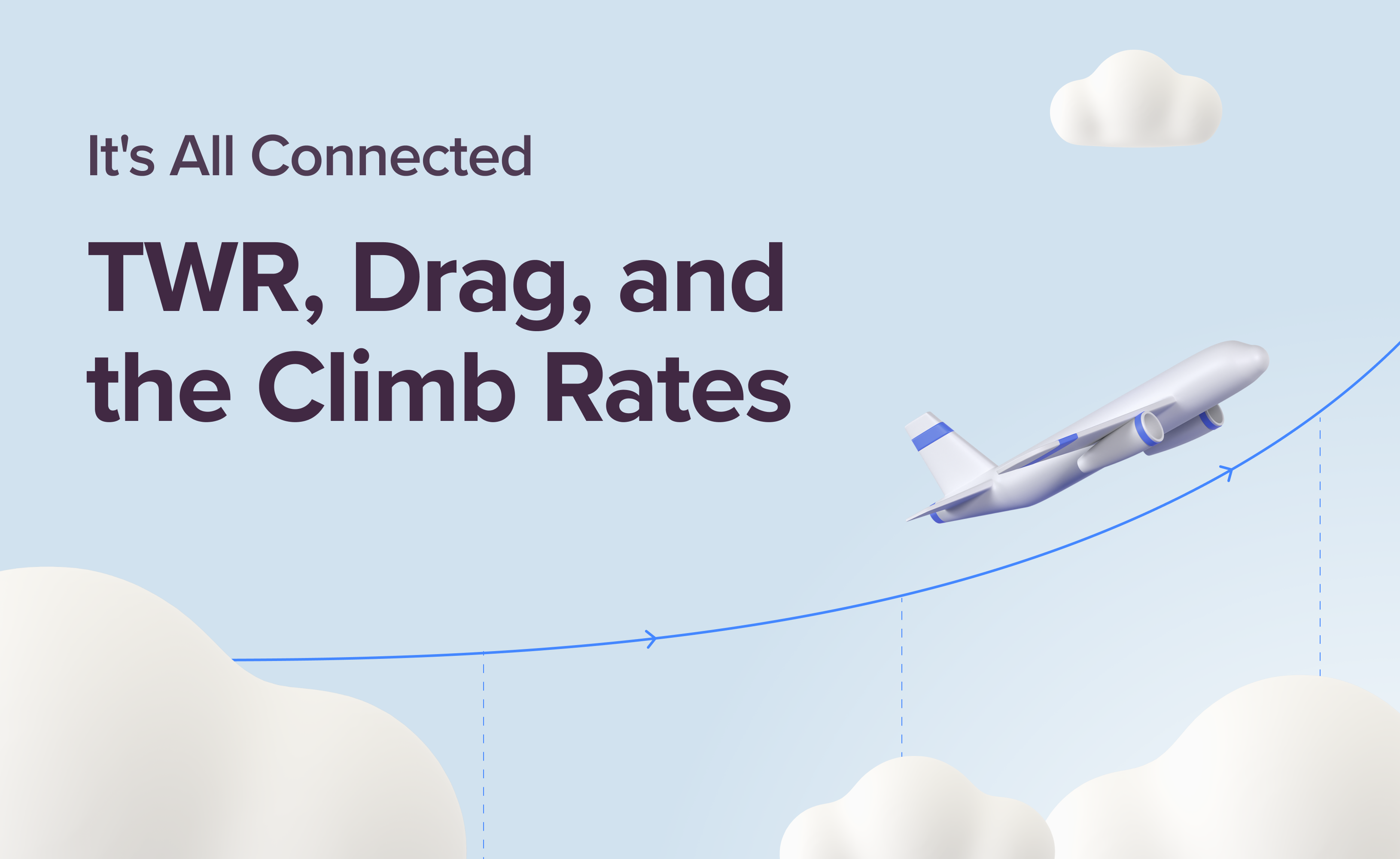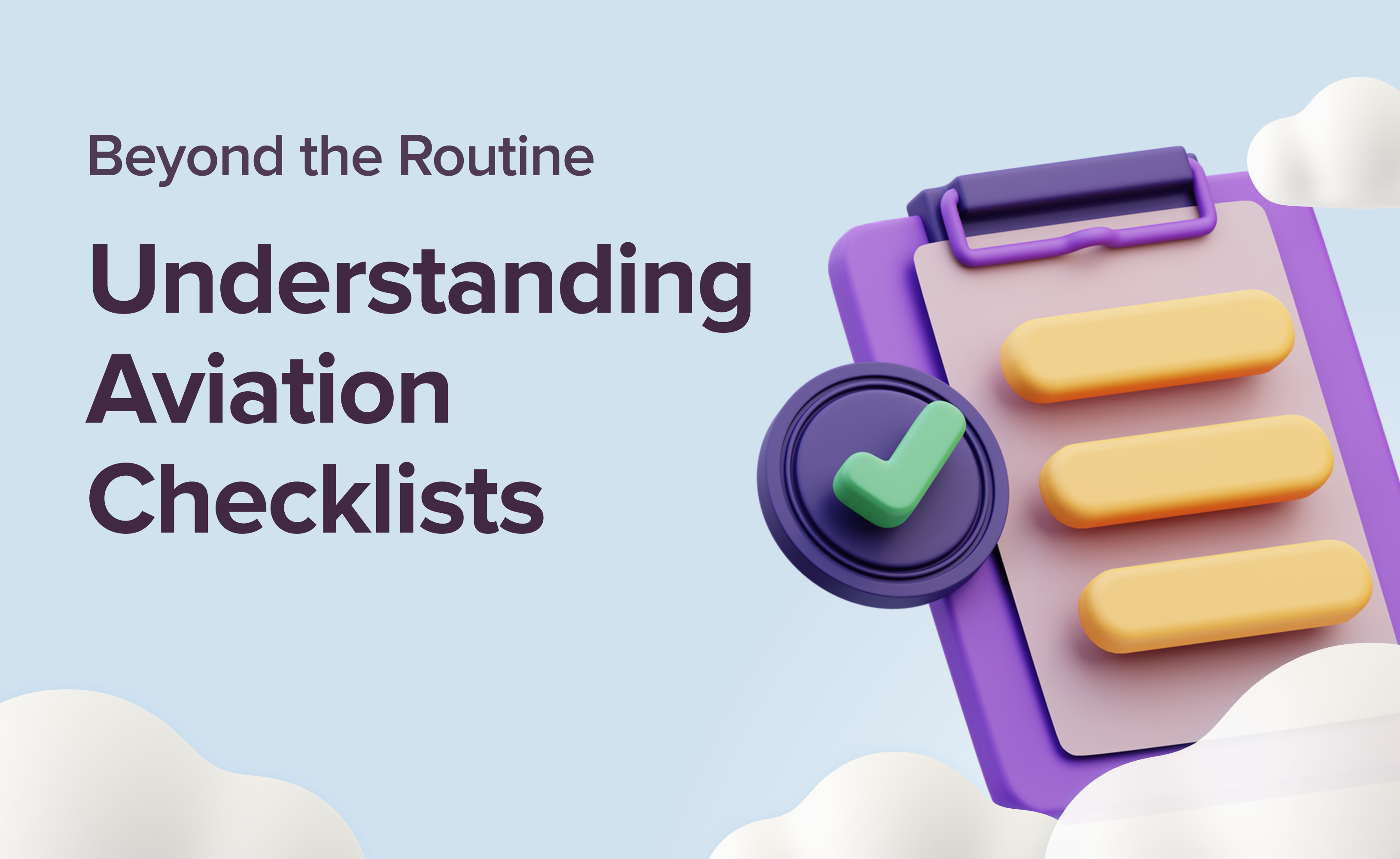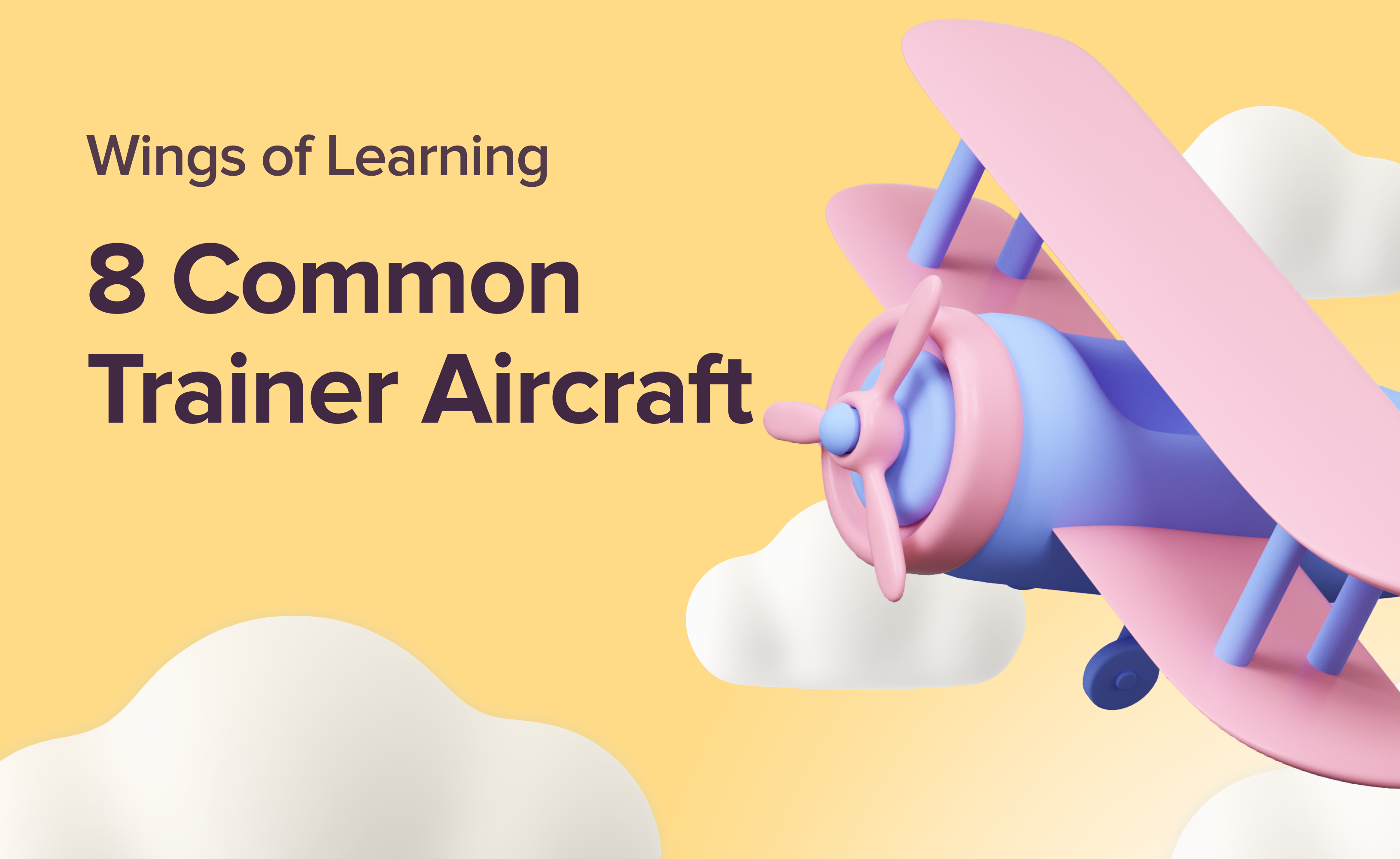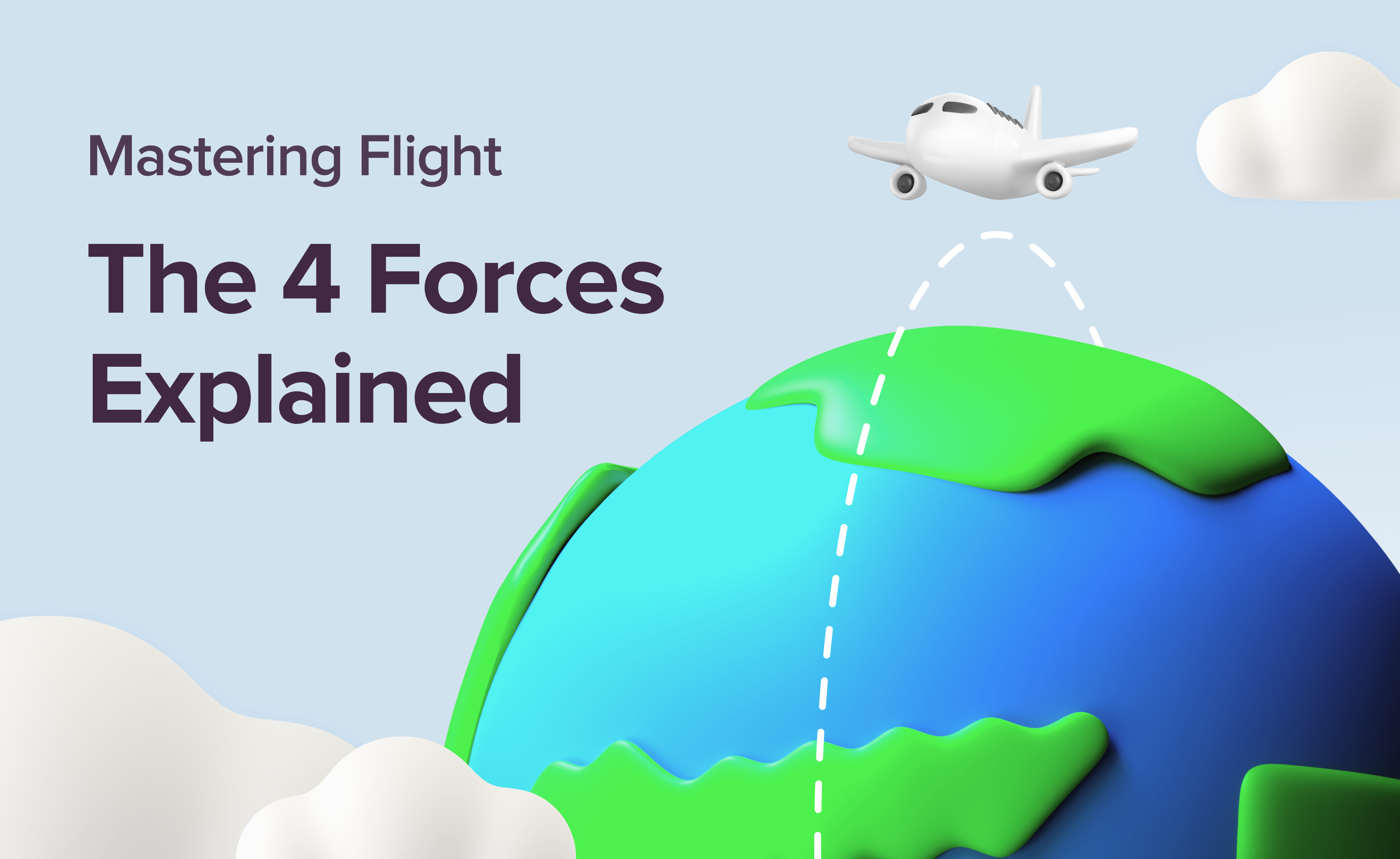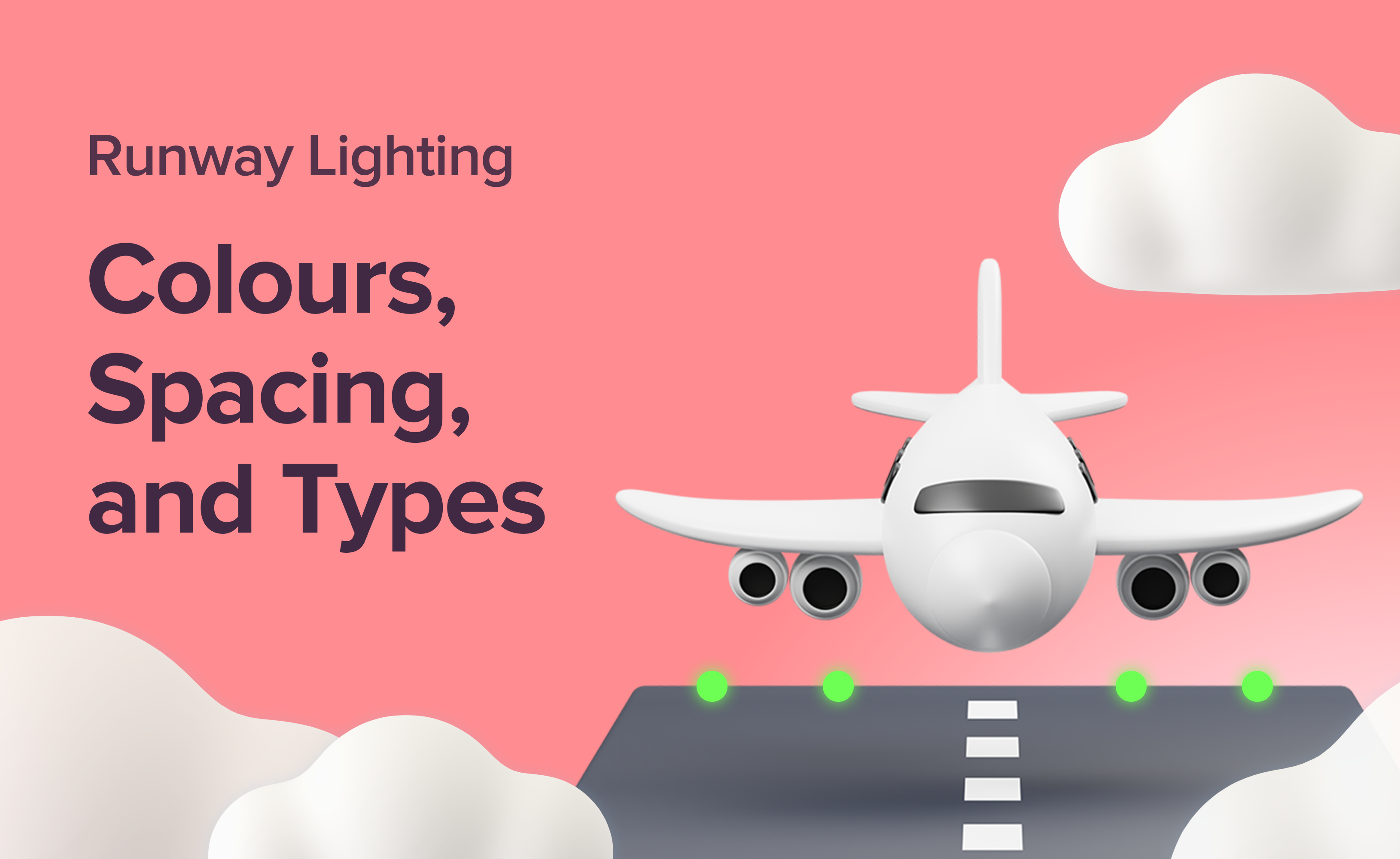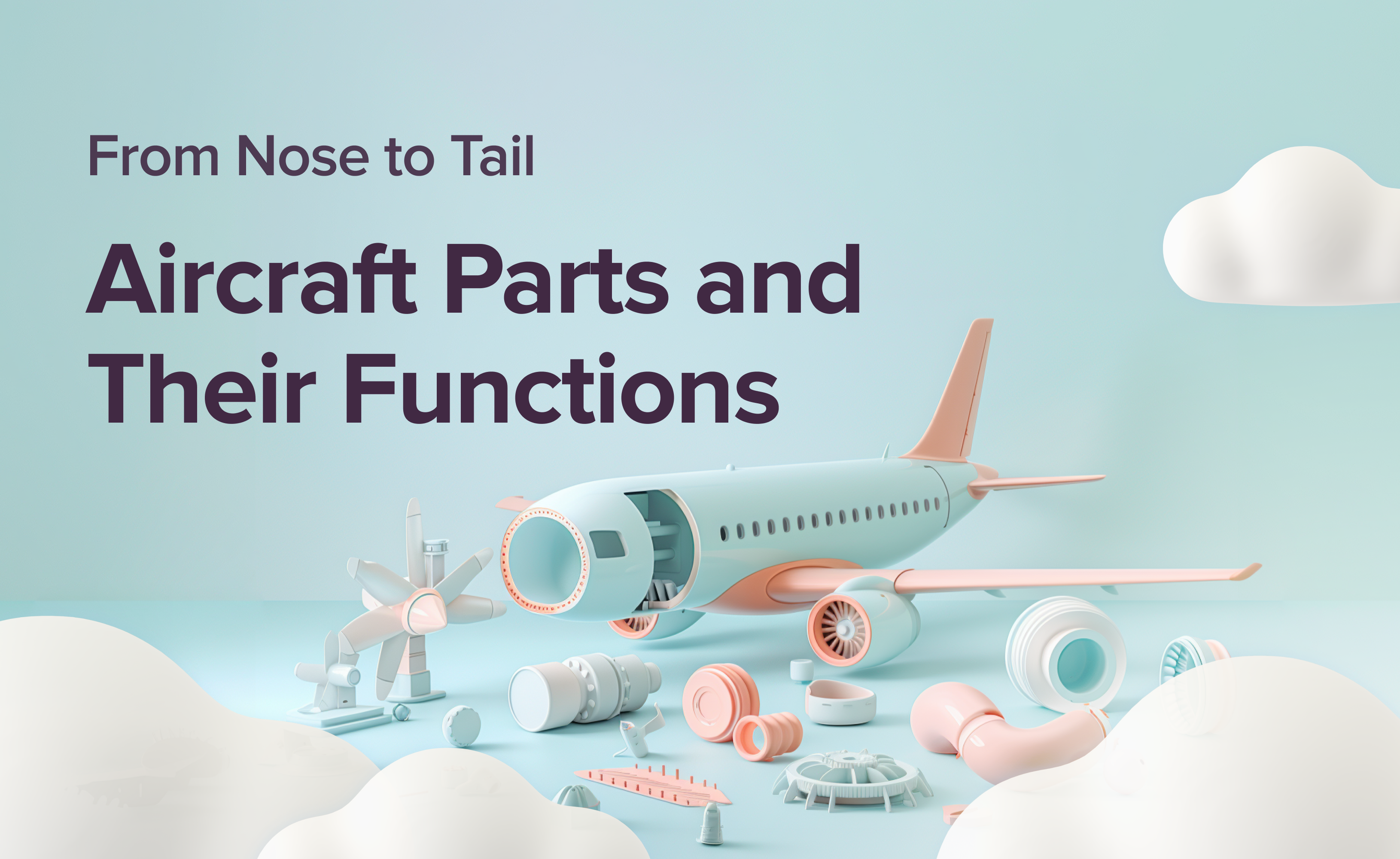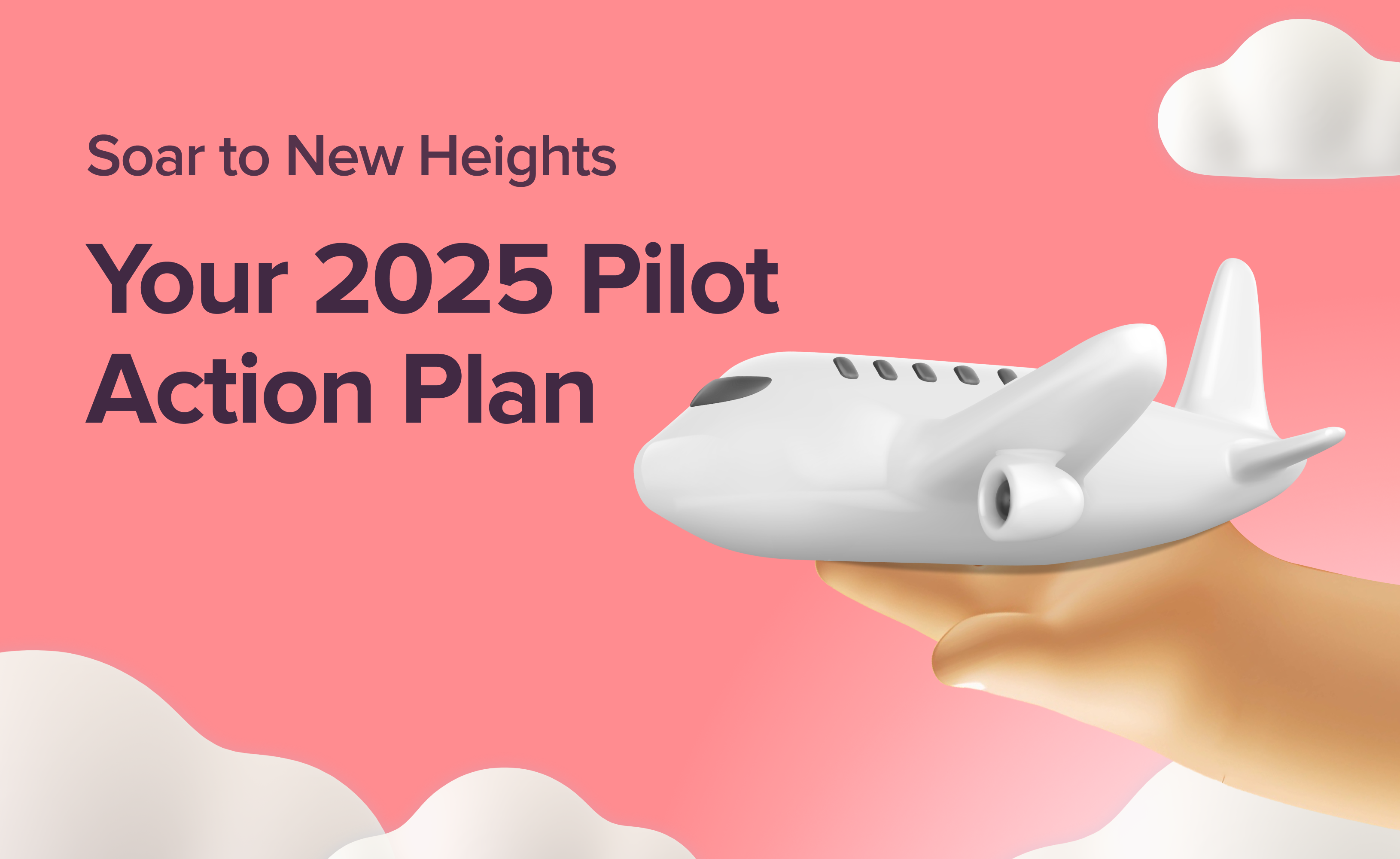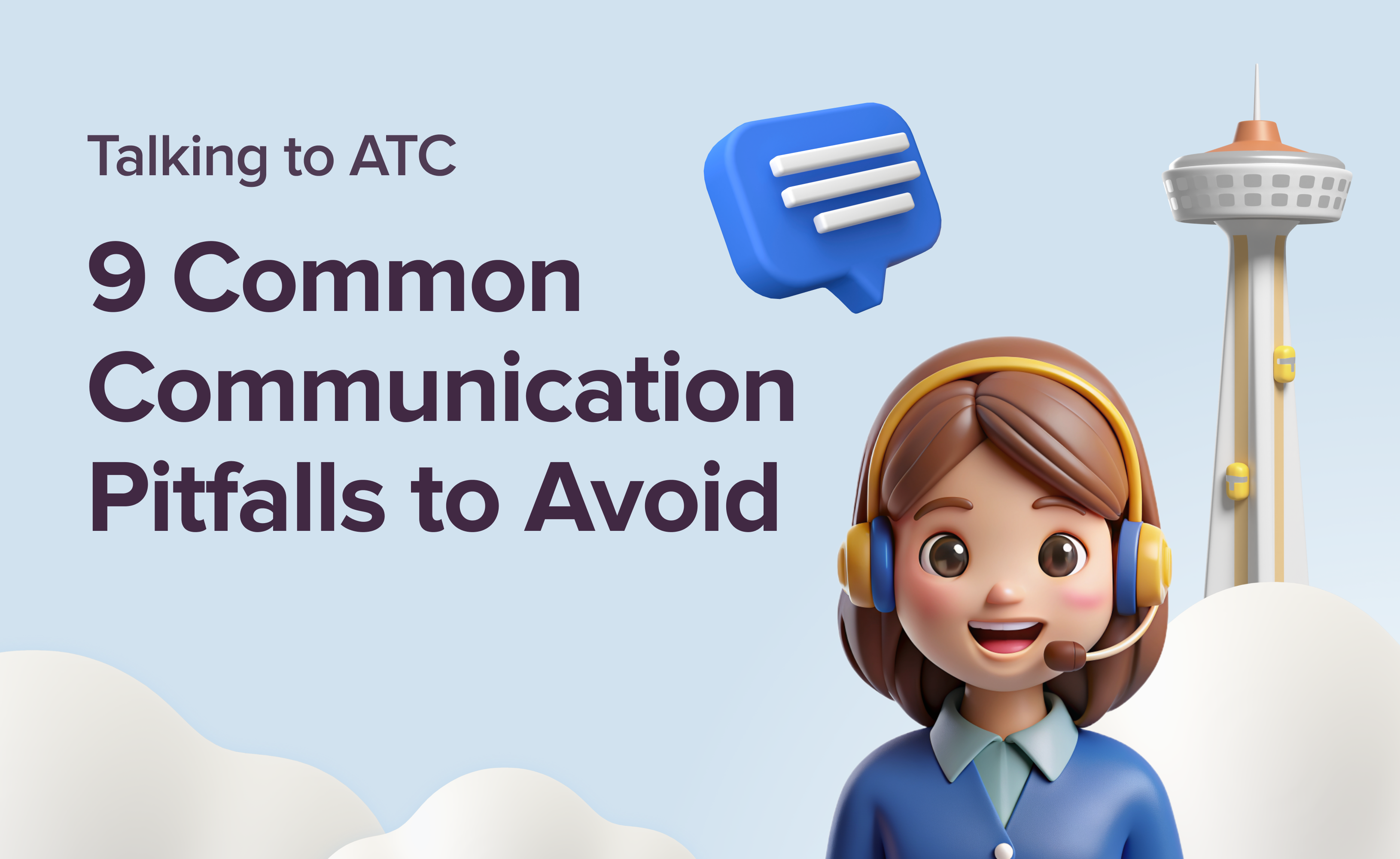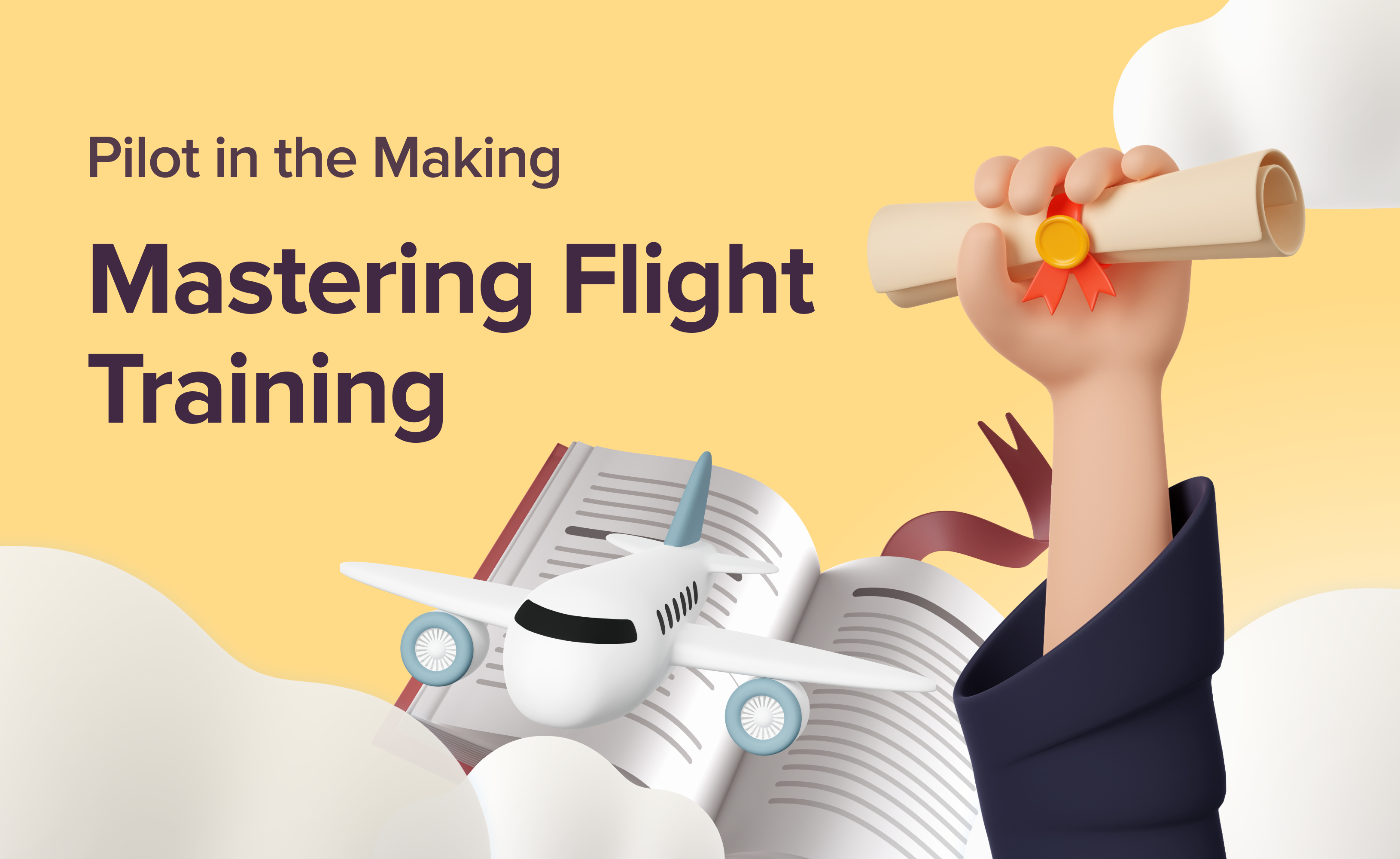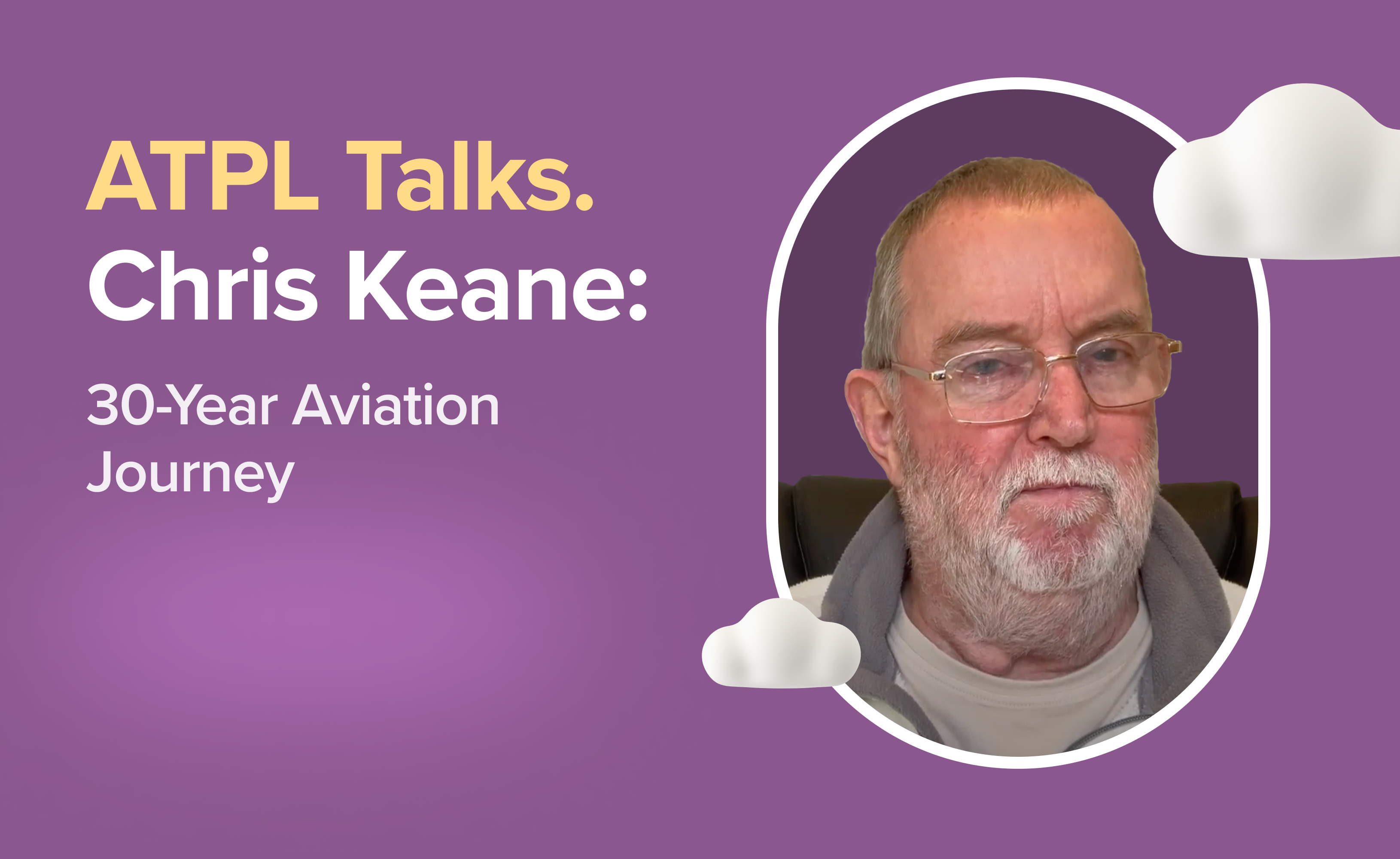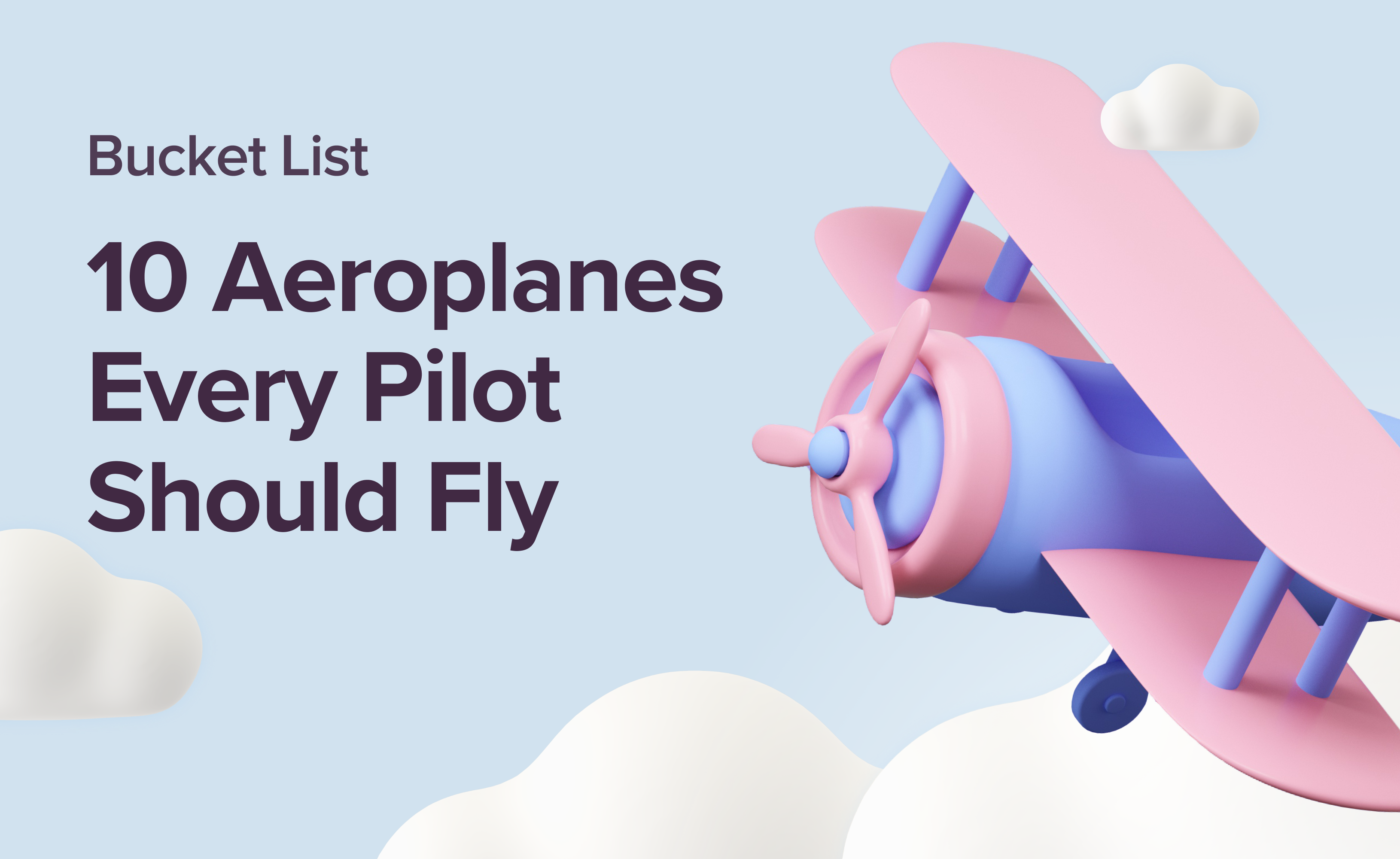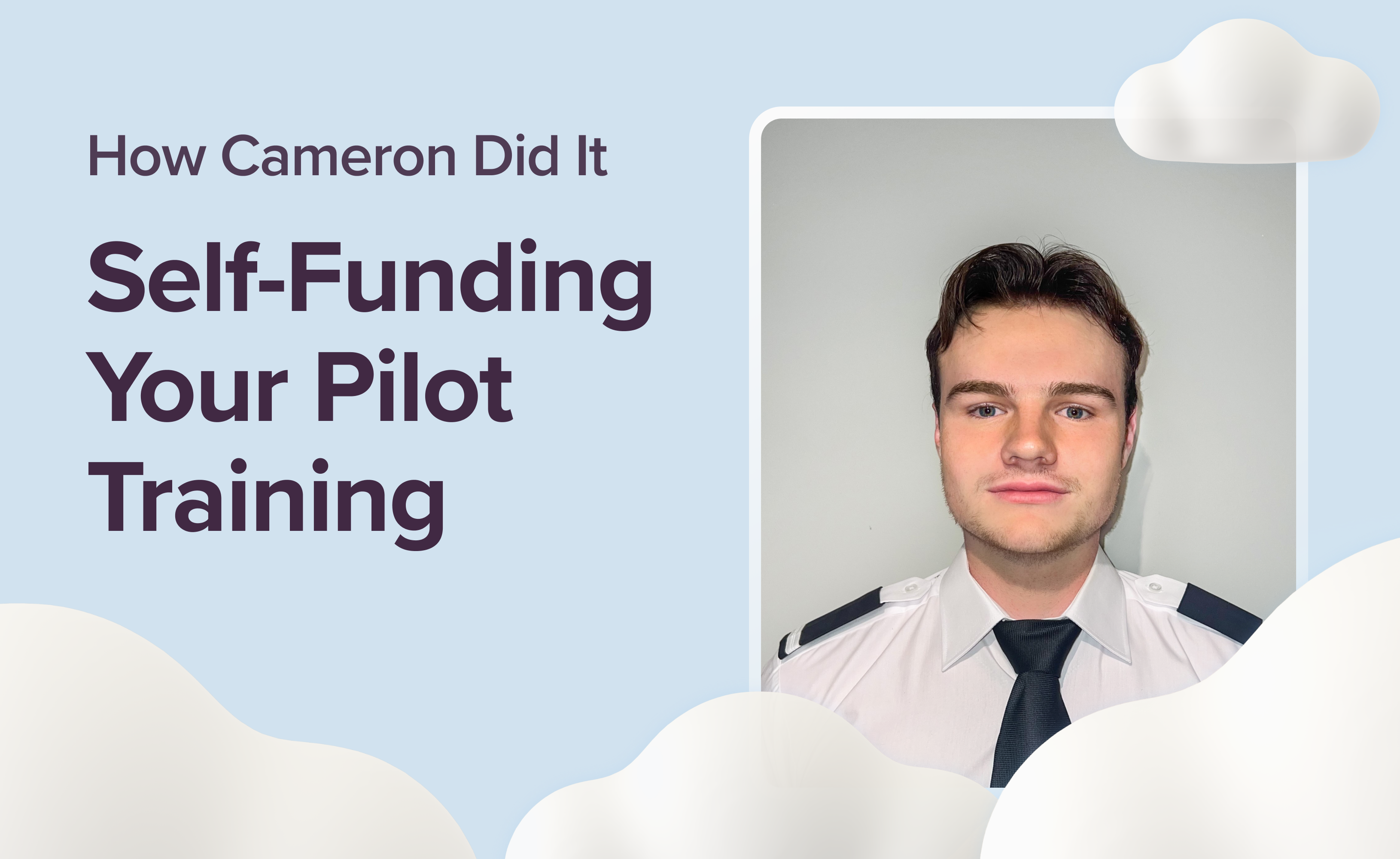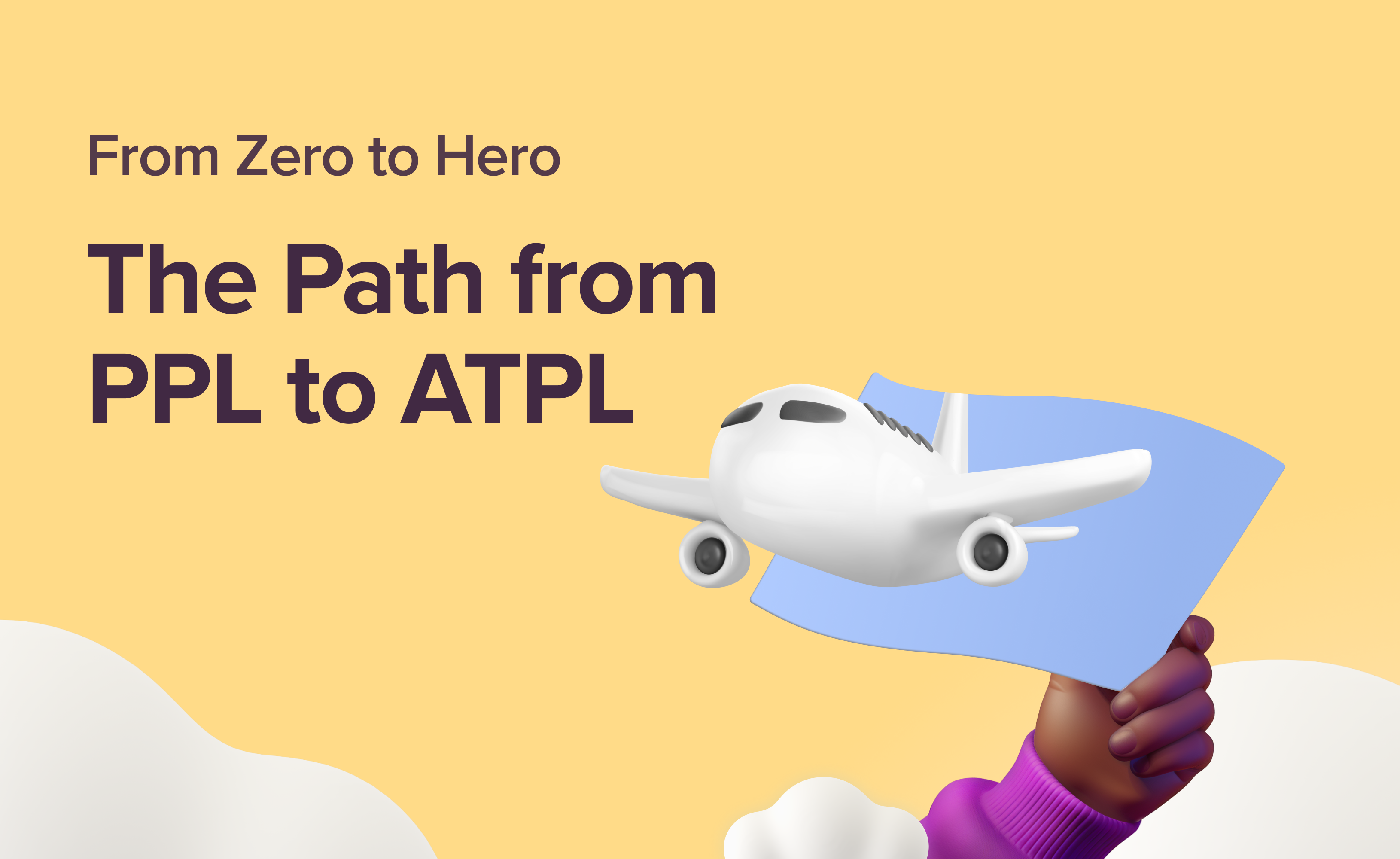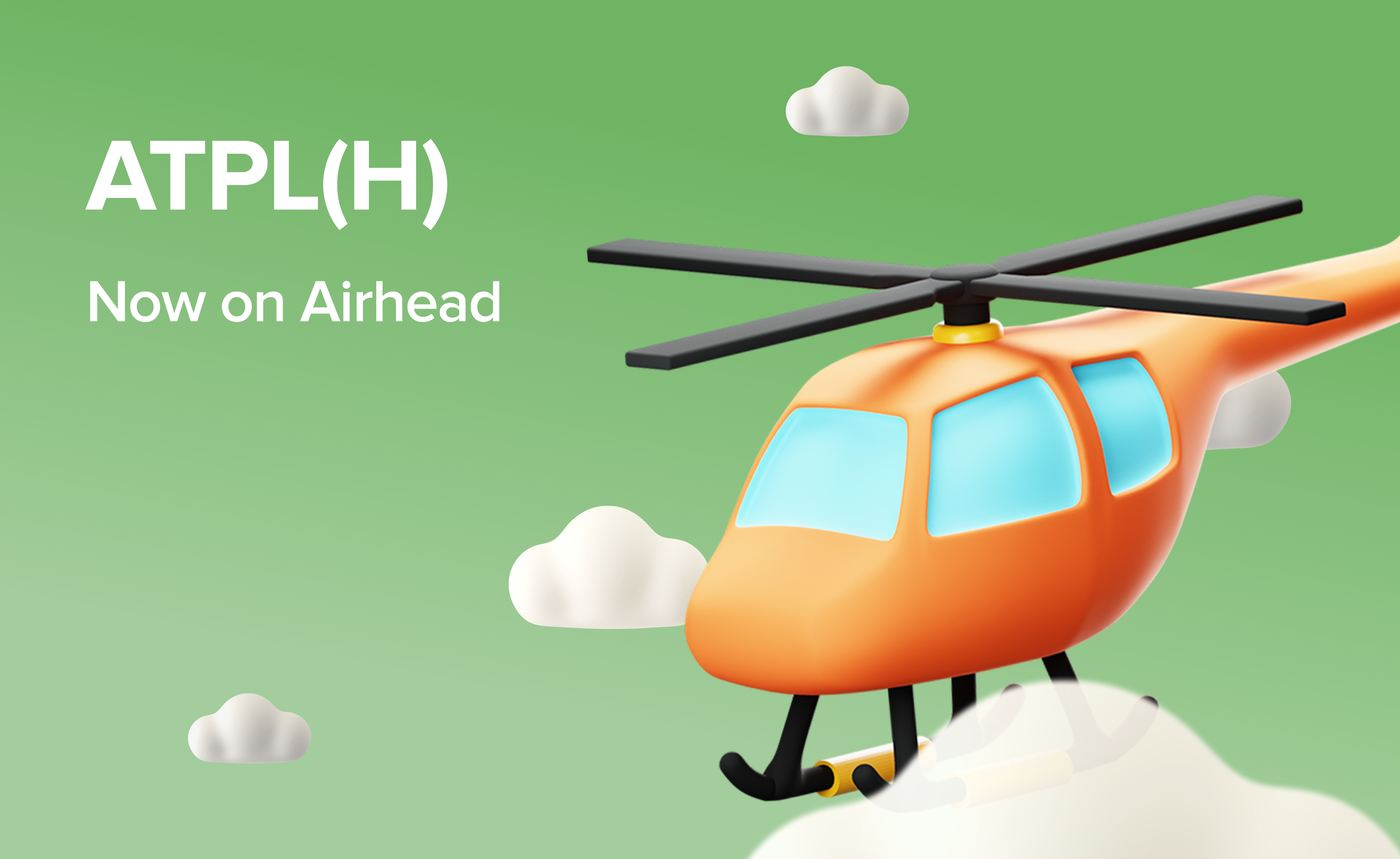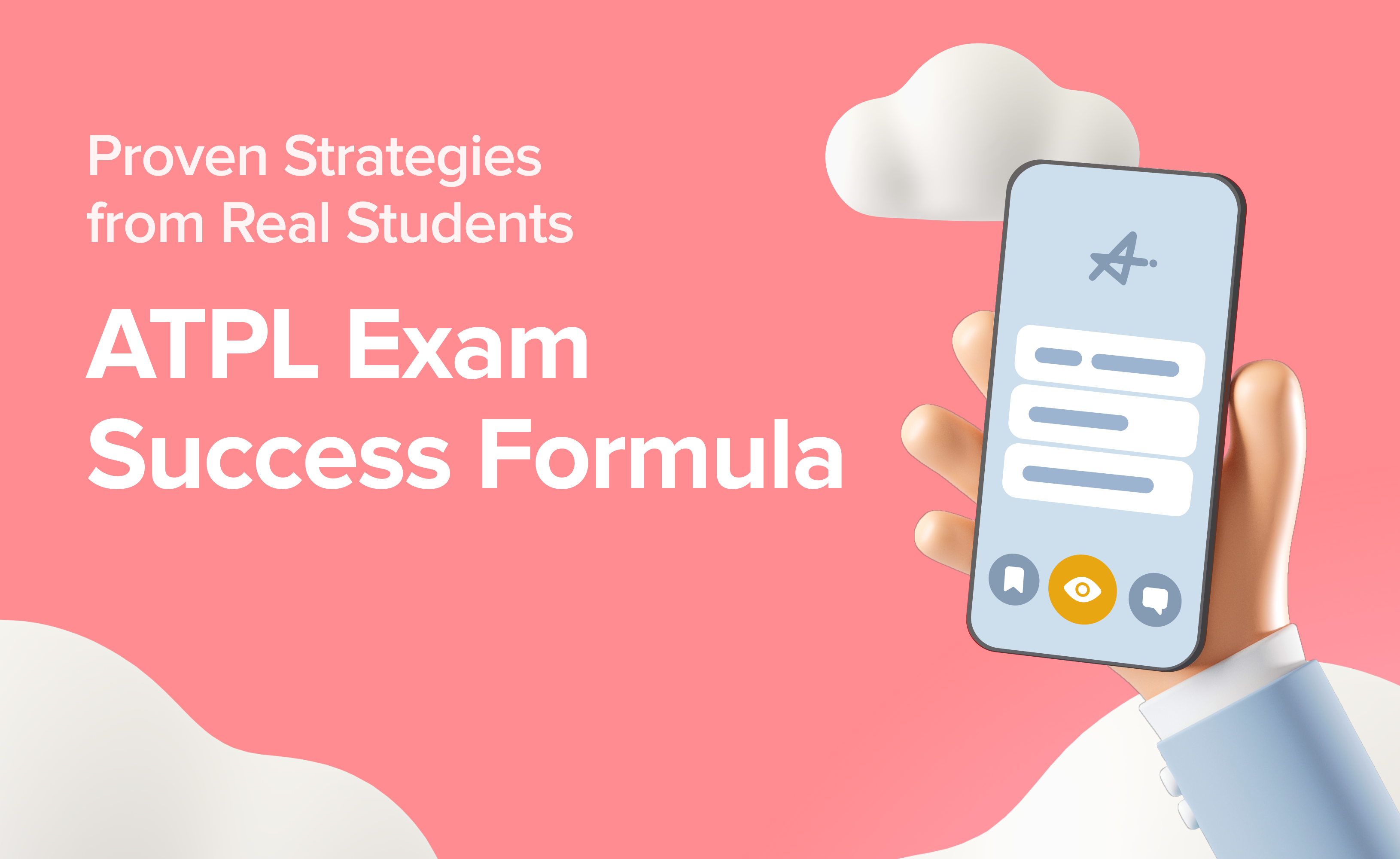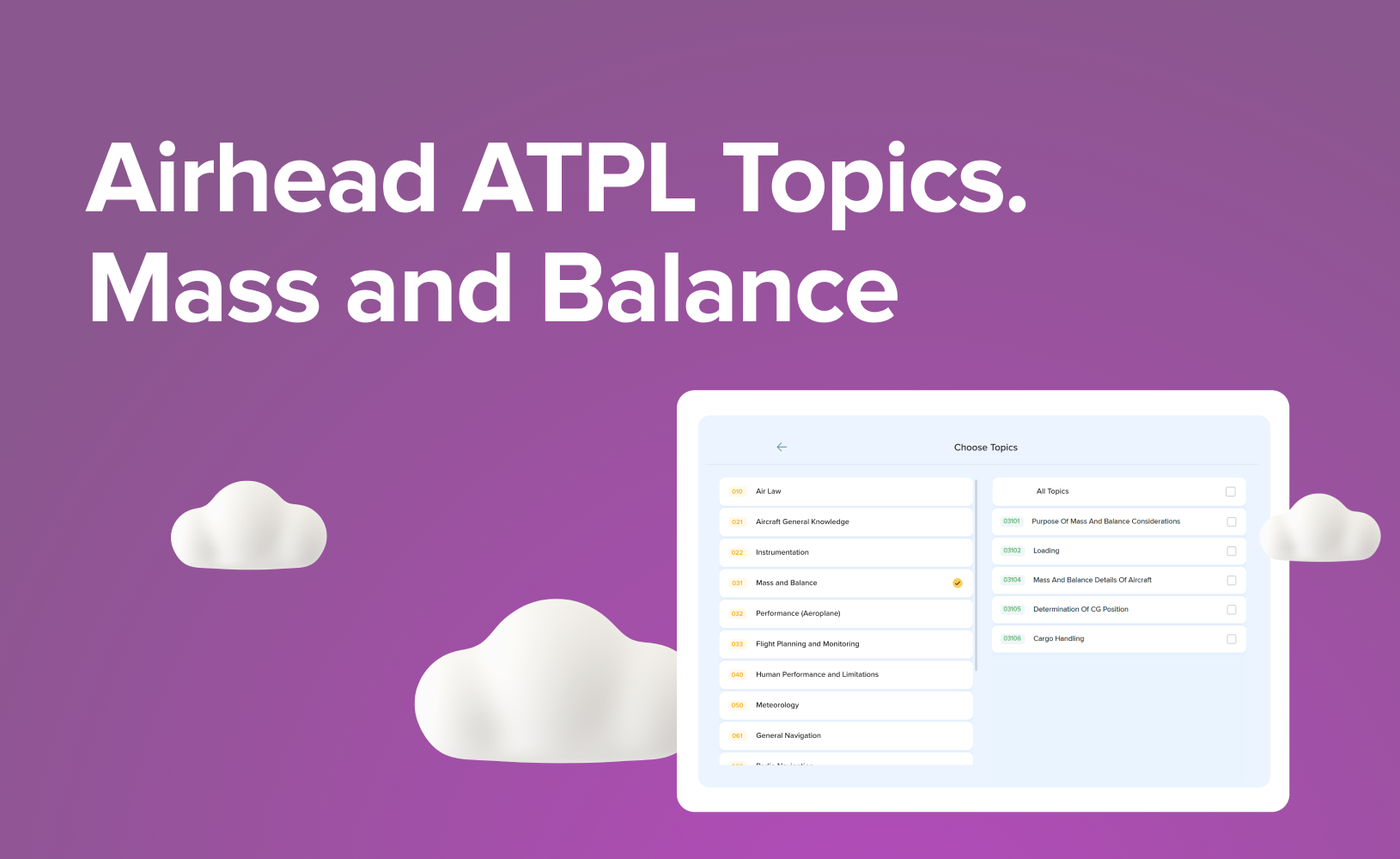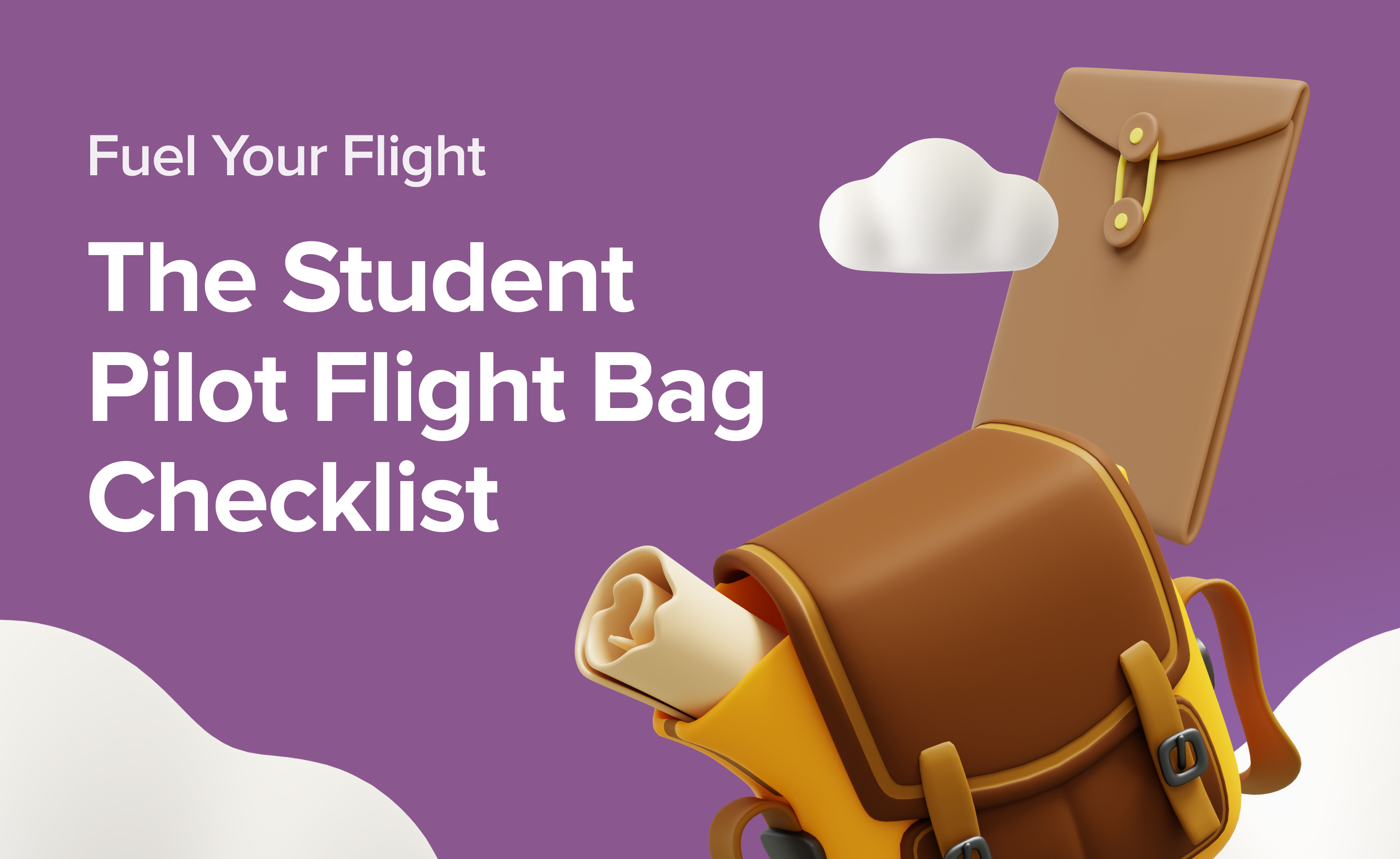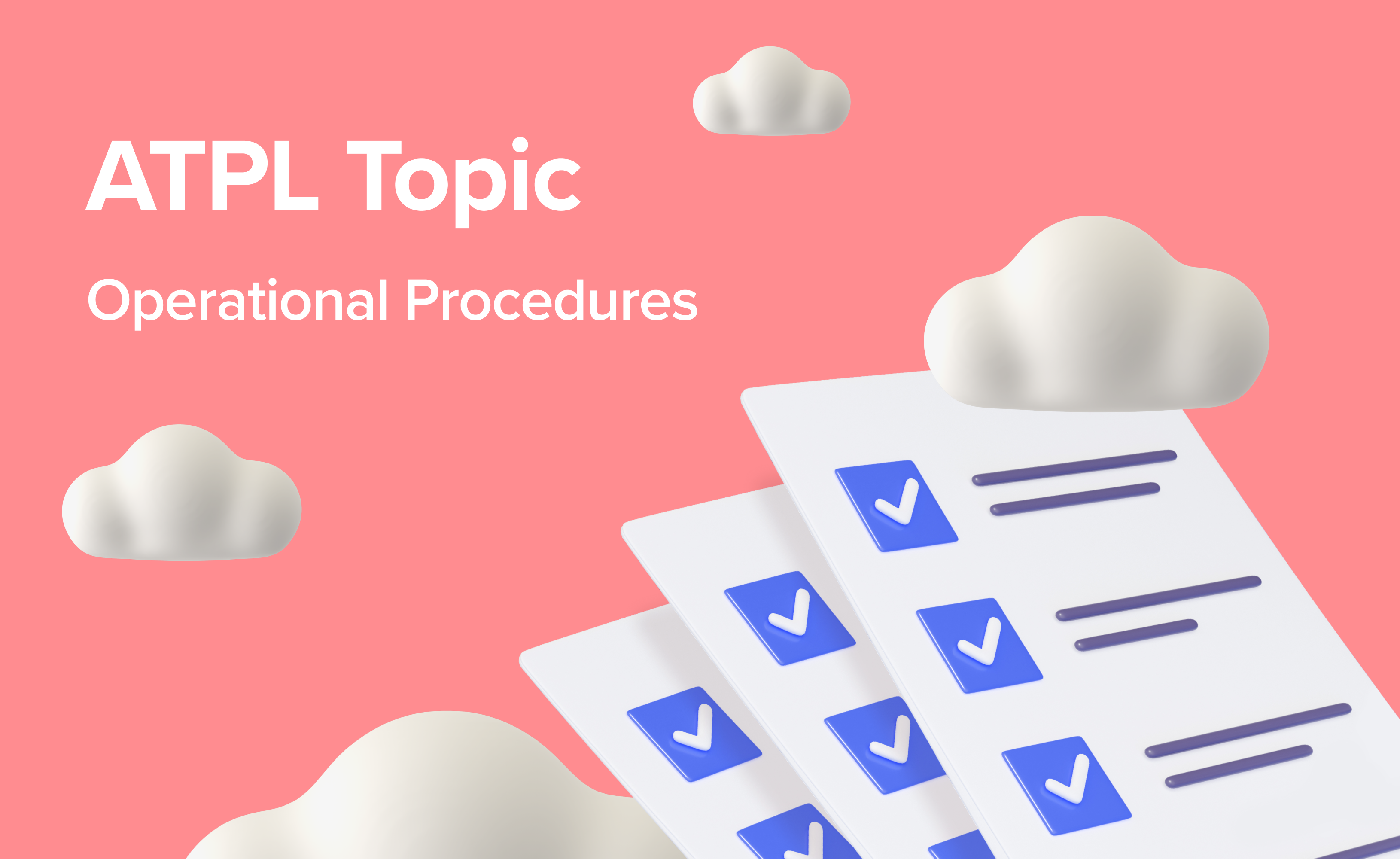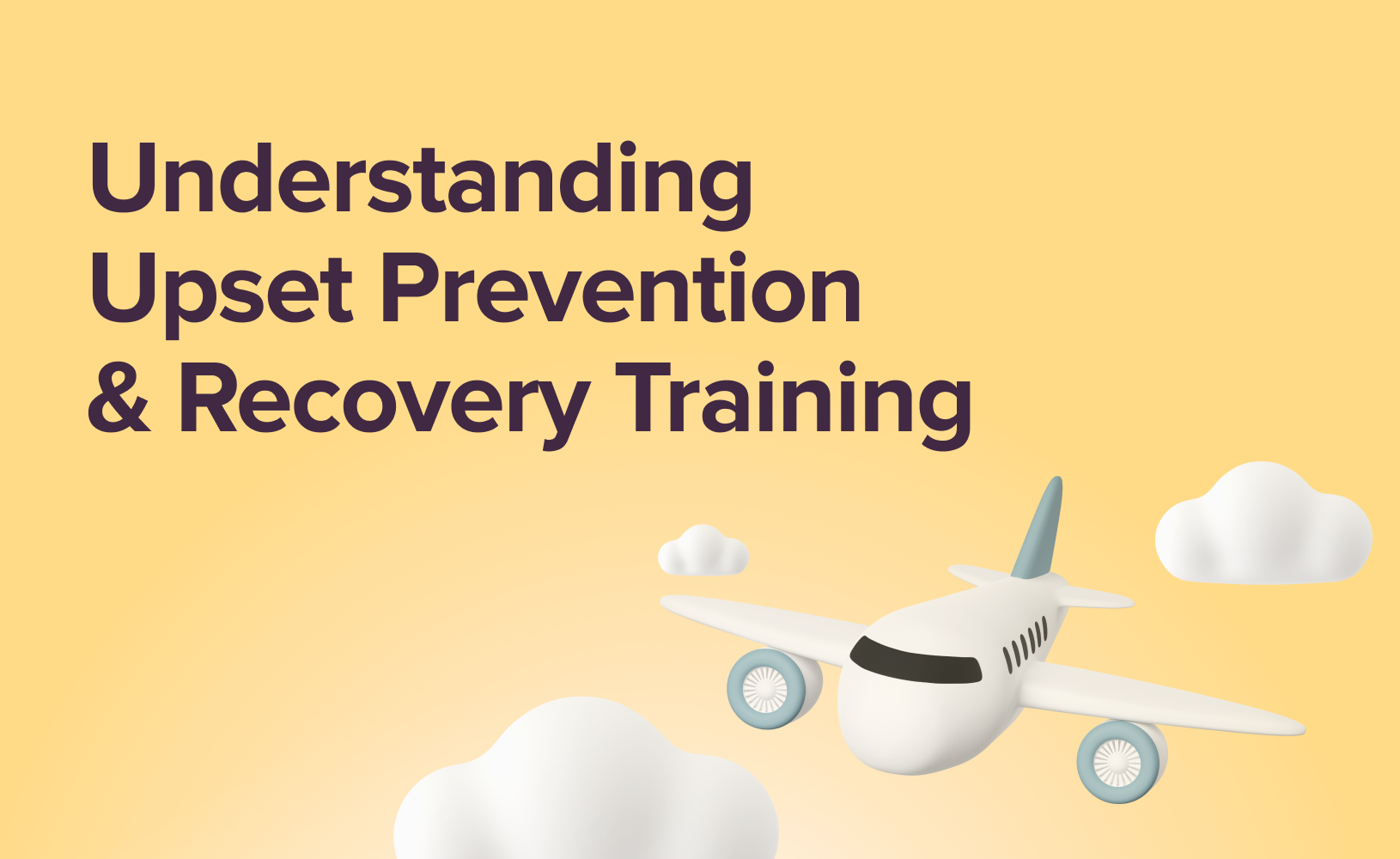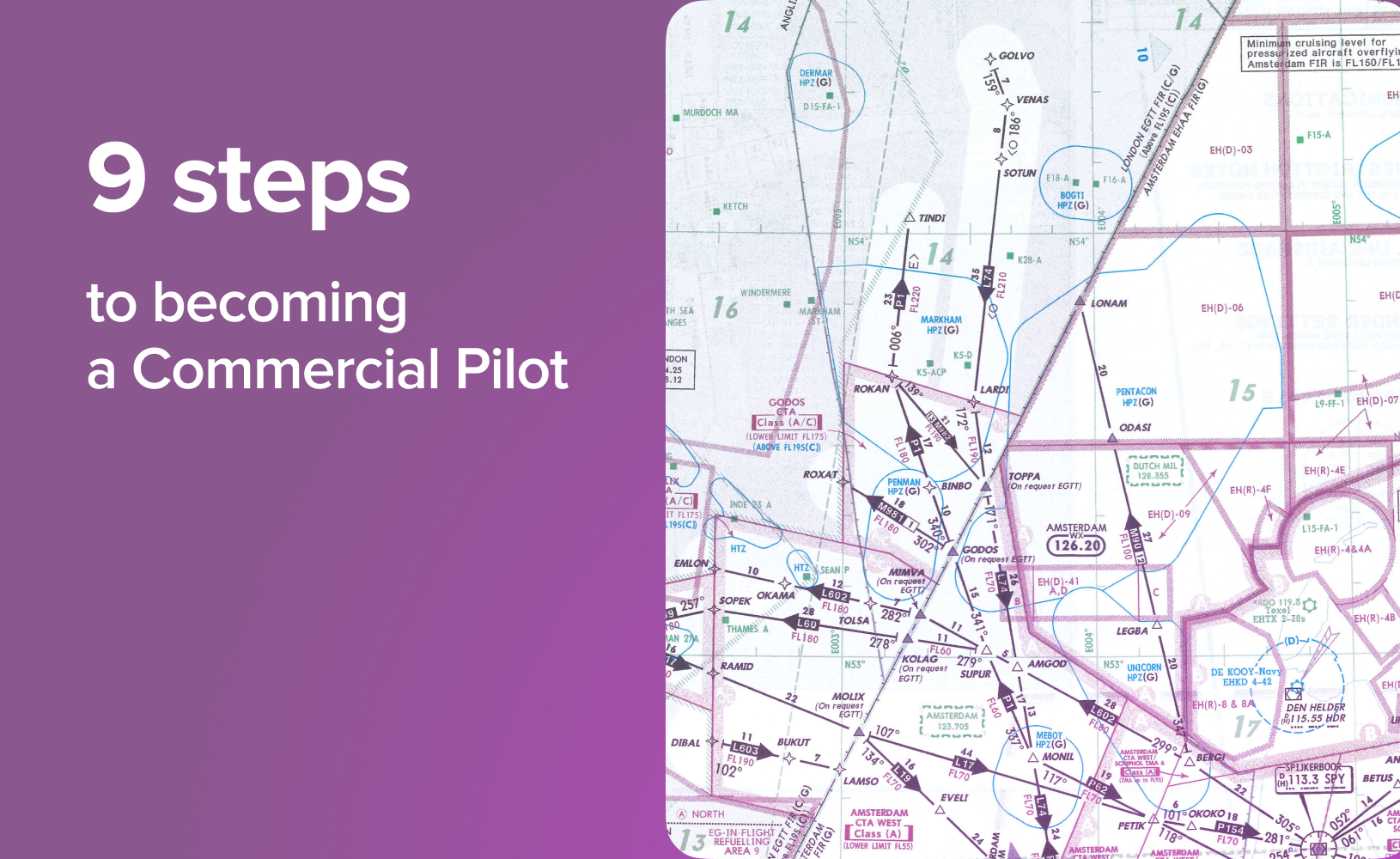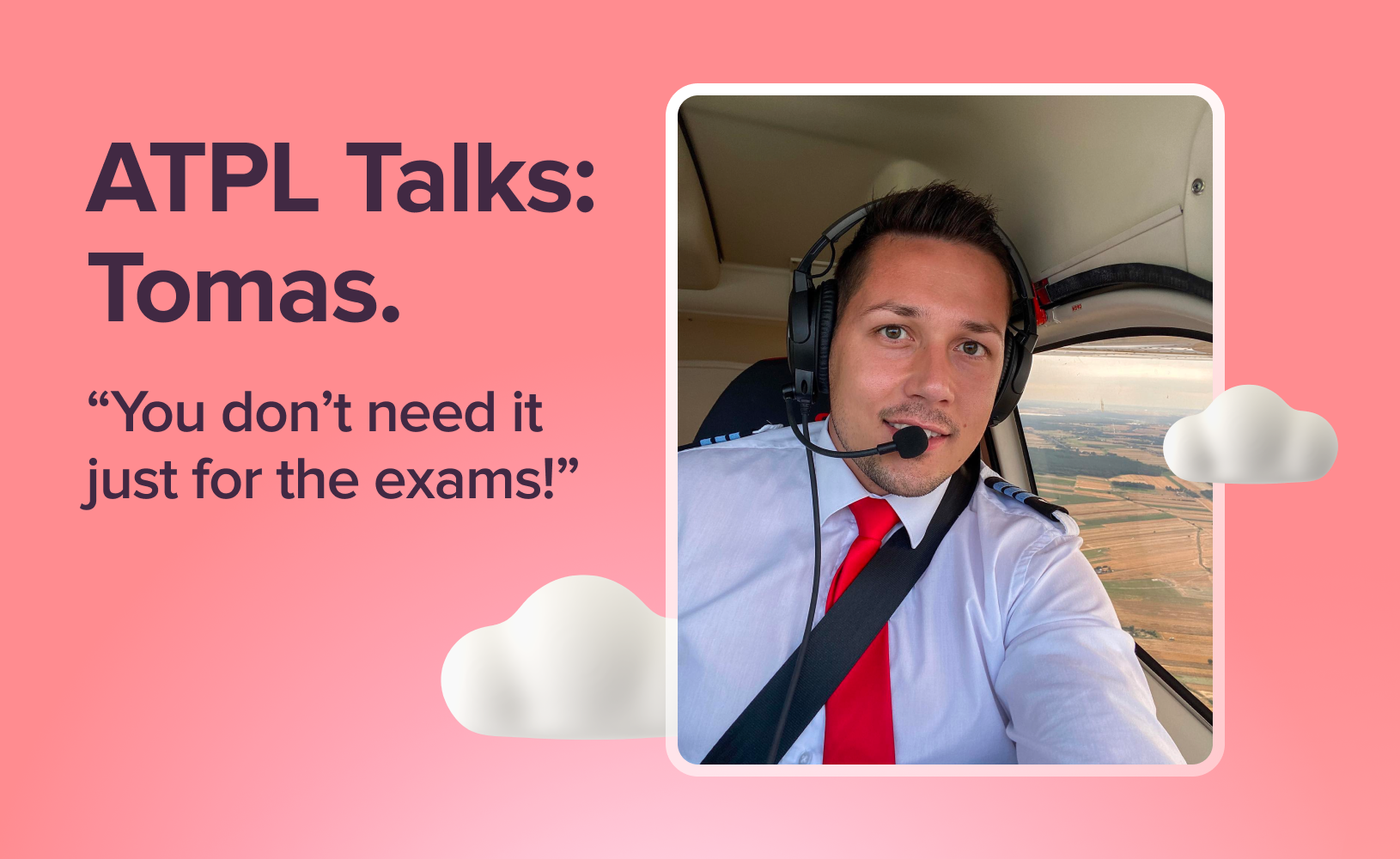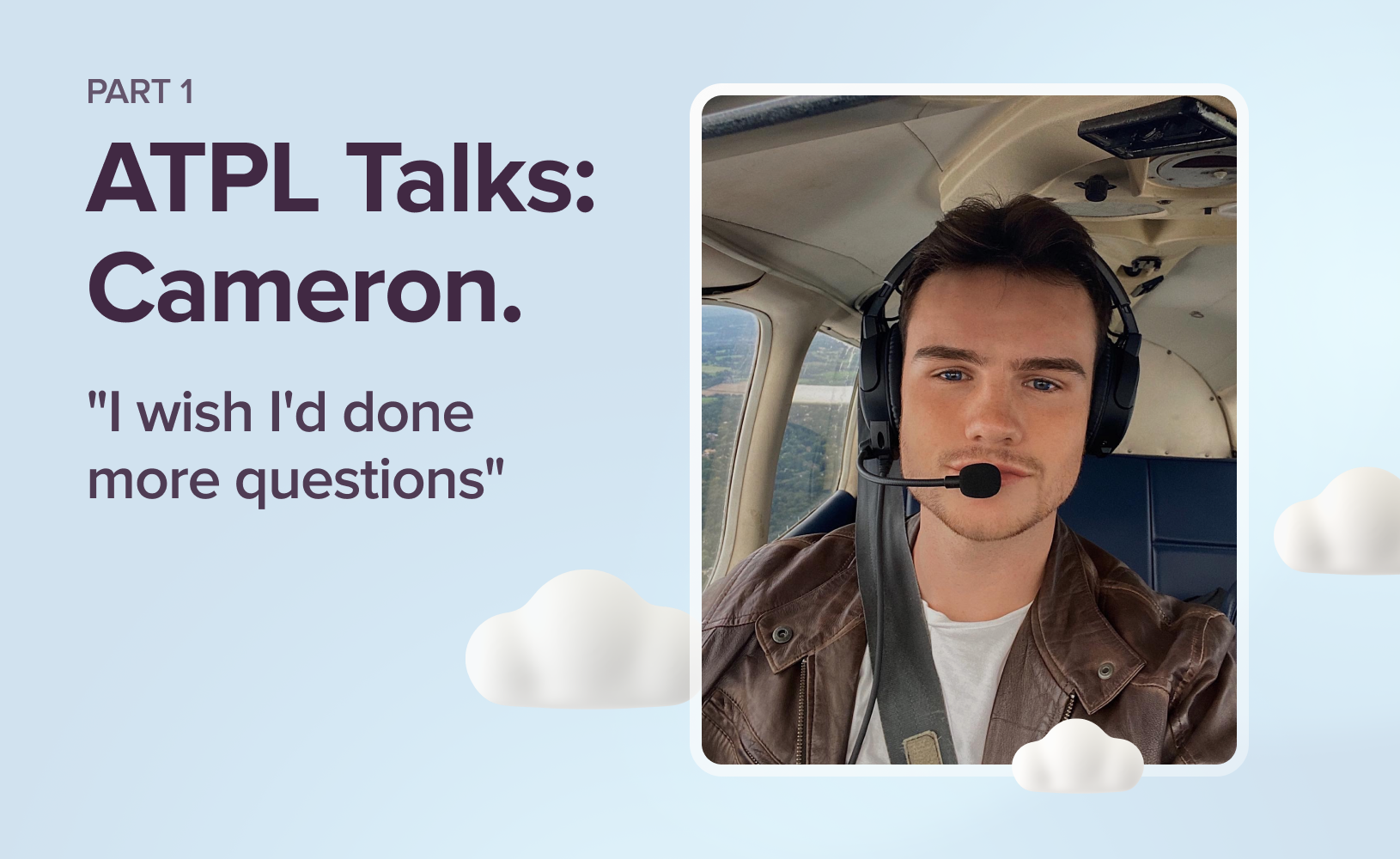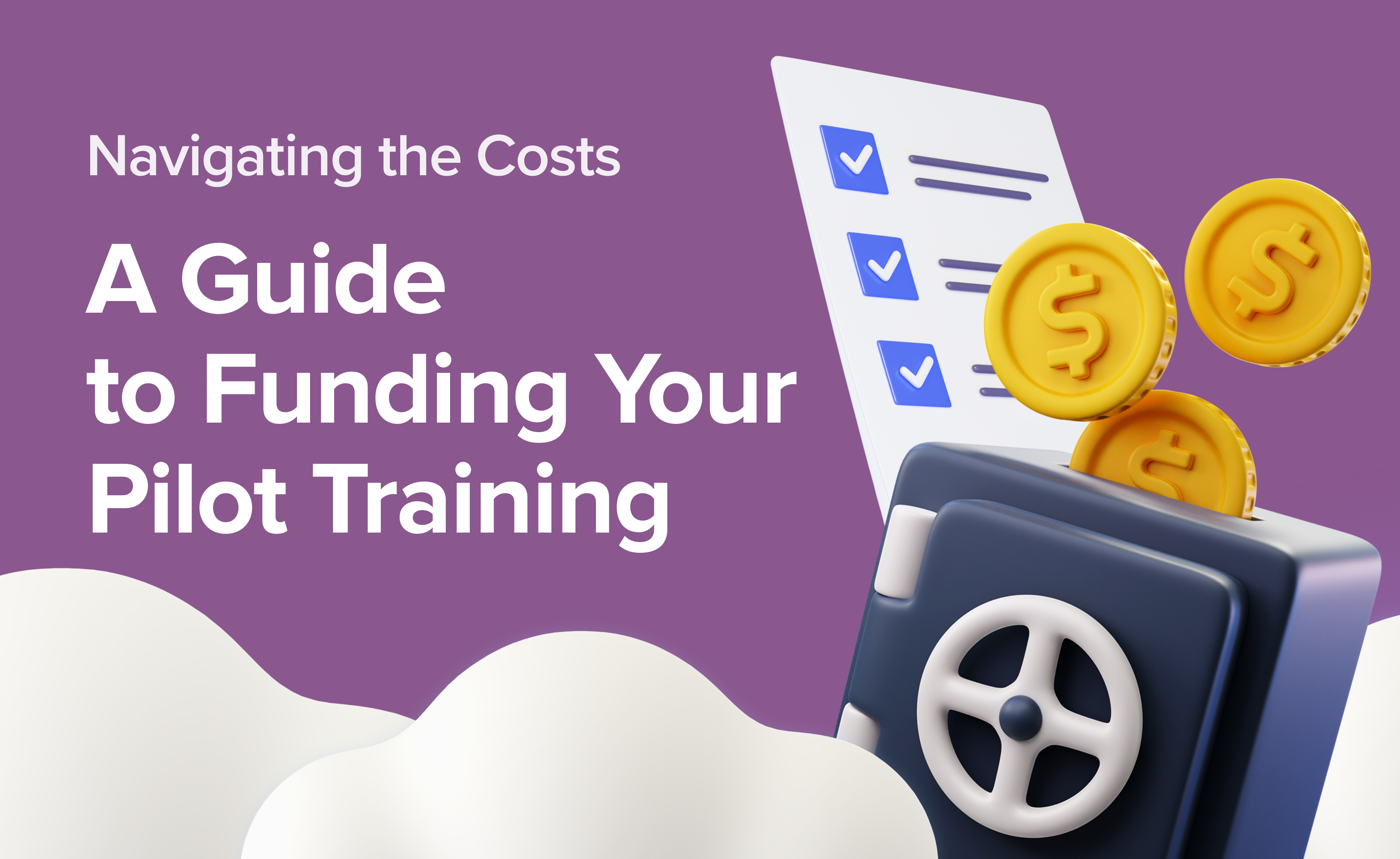Type Ratings Explained: Your Gateway to New Aircraft
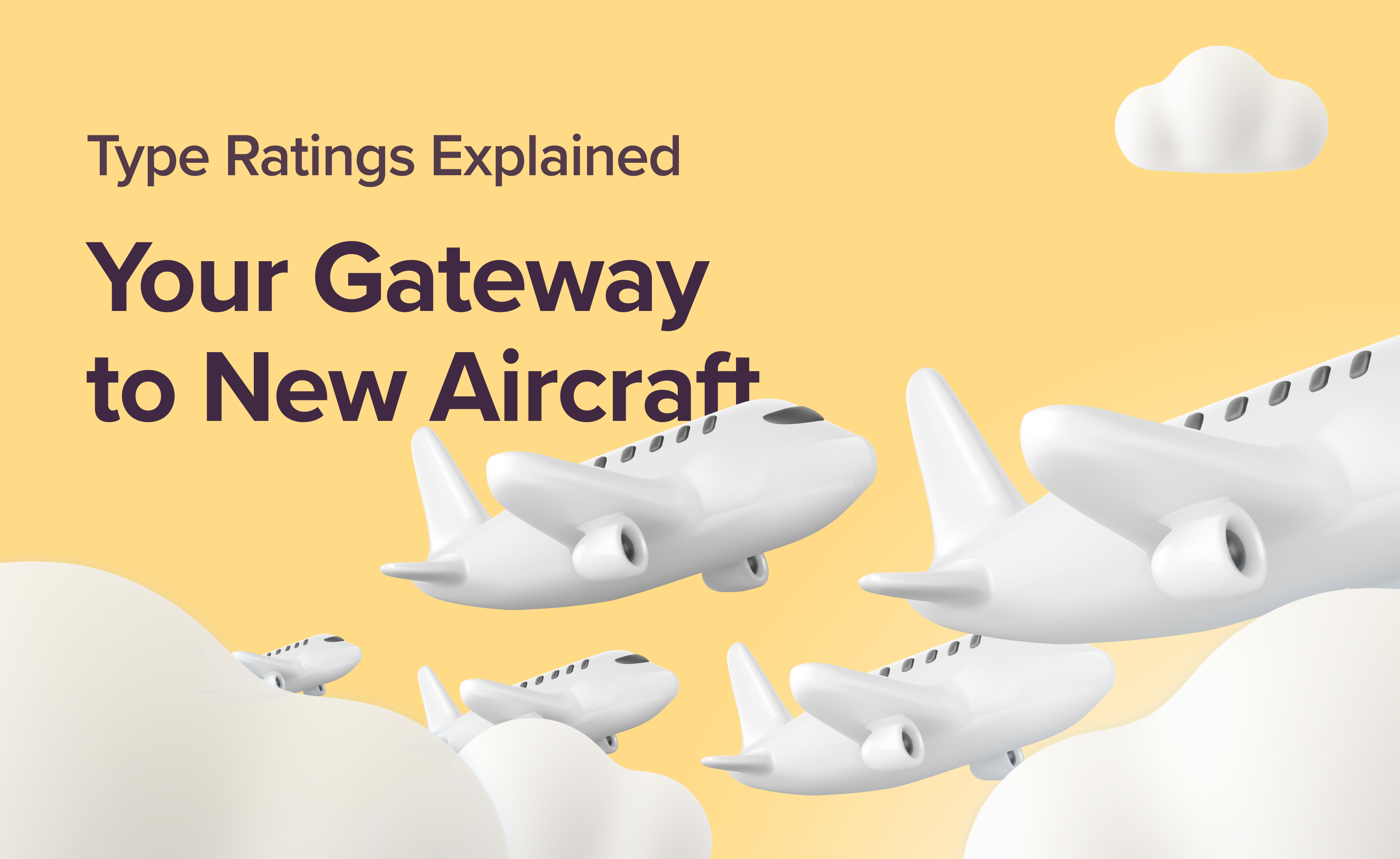
If you're aiming to become a commercial pilot, you’ve likely encountered the term type rating. But what exactly does it mean, and why is it crucial for your aviation career? A common misconception is that type ratings are only required for large, fancy jets. However, that’s far from the truth. Whether you aspire to fly a Boeing 737, an Airbus A320, or another type of aircraft, obtaining the appropriate type rating is an essential step.
In this blog, we’ll demystify type ratings for aspiring pilots in the UK and Europe. We’ll explore what a type rating entails, why it’s necessary, how you can obtain one, and the significant career advantages it offers. Let’s take off!
What Is a Type Rating?

Simply put, a type rating is an additional certification that pilots must obtain to fly specific types of aircraft. It’s like an endorsement on your commercial pilot licence (CPL), granted after completing training for a particular aircraft make and model. This requirement ensures that a pilot is fully qualified to handle the complex systems and unique characteristics of that specific aircraft.
According to the Civil Aviation Authority (CAA) and the European Union Aviation Safety Agency (EASA), you’ll need a type rating for any aircraft that:
Has a Maximum Take-Off Weight (MTOW) exceeding 12,500 pounds (5,700 kg)
Is powered by jet engines (excluding turboprops).
For example, a Boeing 737 Classic has an MTOW of about 138450 pounds (62,800 kg) — more than 11 times the threshold — making a type rating mandatory. Training typically involves ground school and simulator sessions, which prepare you to safely and confidently operate these more complex aircraft. Discover all the EASA and CAA type ratings.
Smaller aircraft, such as general aviation planes, don’t require a type rating. However, you’ll still need appropriate pilot training and qualifications to fly them. For commercial operations involving larger planes or jets, type ratings are a must.
Explore the diverse landscape of aircraft in the blog, From Buzzing Bees to Metal Birds, there's a wide range of aircraft out there.
Why Is It Necessary?
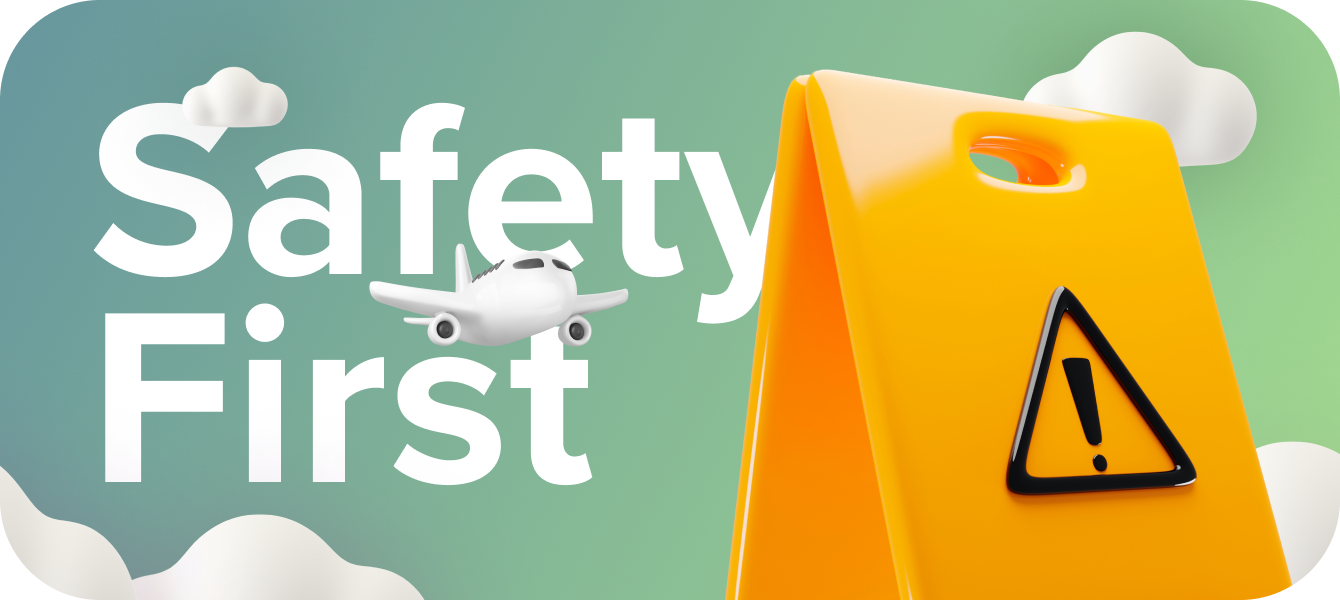
The primary reason behind the requirement for type ratings is safety. As aircraft size and complexity increase, so do the risks and challenges of operating them. A type rating equips you with the knowledge and skills needed to manage an aircraft’s specific systems and handle potential emergencies.
Each aircraft model has unique handling characteristics, from its flight controls to emergency procedures. The more advanced the aircraft systems, the more critical it becomes to undergo advanced pilot training. In addition to being a regulatory requirement, type ratings enhance your skill set. They are an opportunity to expand your experience, making you more versatile and attractive to potential employers.
Expand your horizons. Explore 9 Unique Career Options for Licensed Pilots beyond the airlines.
Eligibility for Type Rating Training
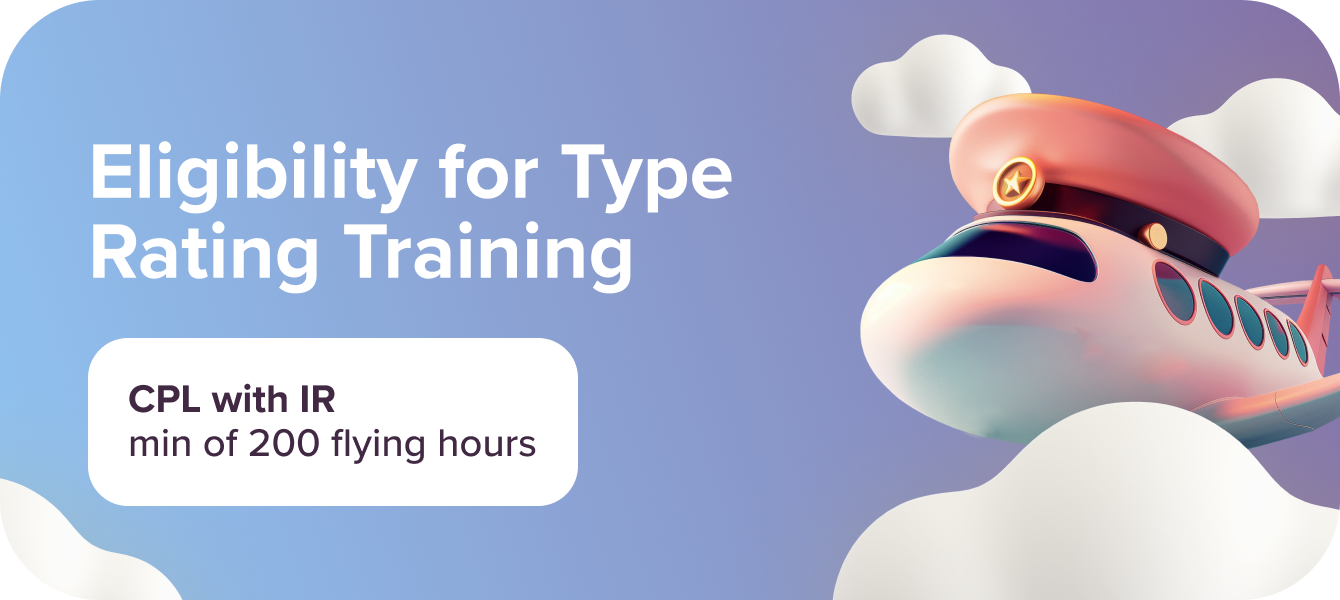
Before diving into type rating training, you’ll need to meet a few prerequisites. Most importantly, you must already hold a Commercial Pilot Licence (CPL) with an Instrument Rating (IR). This ensures that you have the necessary foundational skills, such as flying in various weather conditions and navigating controlled airspace — essential competencies when flying more advanced, complex aircraft.
Unsure whether to start your modular flight training with CPL or IR? This article provides valuable insights to help you make an informed decision.
However, holding a CPL and IR isn’t the only requirement. You’ll also need adequate flying experience before attempting type rating training. The number of flying hours required can vary depending on the aircraft and the regulations in place. For instance, airlines in Europe commonly expect qualified pilots to have around 200 flight hours before they even consider applying for a type rating course.
If you’ve recently finished your basic training and are eyeing type rating programmes, make sure you know the specific requirements for the aircraft you want to train on, as they might differ depending on the airline and the training provider.
Curious about the steps involved in becoming an ATPL pilot? Read our blog for a detailed breakdown of the PPL to ATPL path.
How to Get a Type Rating

Obtaining a type rating is a multi-step process. Let’s break it down:
Step 1: Ground School
The journey begins in the classroom. During ground school, you’ll learn the intricate details of the aircraft systems, operations, and emergency procedures. Expect to dive deep into how the aircraft works, from its electrical systems to hydraulics and avionics. The goal is to understand the plane inside and out so that when you’re in the cockpit, nothing comes as a surprise.
Step 2: Simulator Training
Once you’ve completed ground school, it’s time to move into the simulator — a realistic, full-motion setup that mimics the aircraft you’re training for. In the simulator, you’ll practise routine operations and emergency scenarios, learning to apply your theoretical knowledge in a practical environment. This part of the training is essential because it’s where you’ll learn to manage the aircraft systems in both normal and abnormal conditions.
Step 3: The Check Ride
The final hurdle is the check ride, where a designated examiner evaluates your ability to operate the aircraft safely and effectively. Typically, this assessment takes place in flight simulators, where pilots demonstrate everything they have learned, including emergency procedures and in-flight operations.
Should you add a BIR or IR(R) to your pilot licence? Discover the pros and cons of each rating in our informative blog post.
Alternative Type Rating Options
While the traditional route to a type rating follows after obtaining a CPL and IR, other pathways might be worth exploring, especially if you're early in your training or want an airline-specific career path.
Multi-Crew Pilot Licence (MPL)
Some airlines offer Multi-Crew Pilot Licence (MPL) programmes, which integrate type rating training into the overall flight training process from the very beginning. This option is different from the traditional route, as it’s designed with a specific airline in mind. The MPL takes you directly from ab initio (entry-level) training to a position as a First Officer on a particular aircraft model.
In an MPL programme, you’ll train with the airline’s fleet in mind, focusing heavily on crew resource management (CRM) and multi-crew operations from the start. Once you complete the programme, you’ll have both your MPL and the type rating for the specific aircraft you’ll be flying. This streamlined route can be a great option if you’re sure of the airline you want to work for and the aircraft you want to operate.
Jet Orientation Course (JOC)
Another popular preparatory option is the Jet Orientation Course (JOC). While it’s not a type rating, it’s often taken by aspiring pilots to help bridge the gap between flying smaller aircraft and transitioning to jets. The JOC introduces you to jet operations, including handling jet-specific systems, higher speeds, and more complex flight dynamics.
If you’re planning to undertake a type rating for a commercial jet, the JOC is a fantastic stepping stone. It gives you practical experience and a better feel for jet aircraft, ensuring that you’re fully prepared for the rigours of type rating training.
Type Rating Job Market in Europe
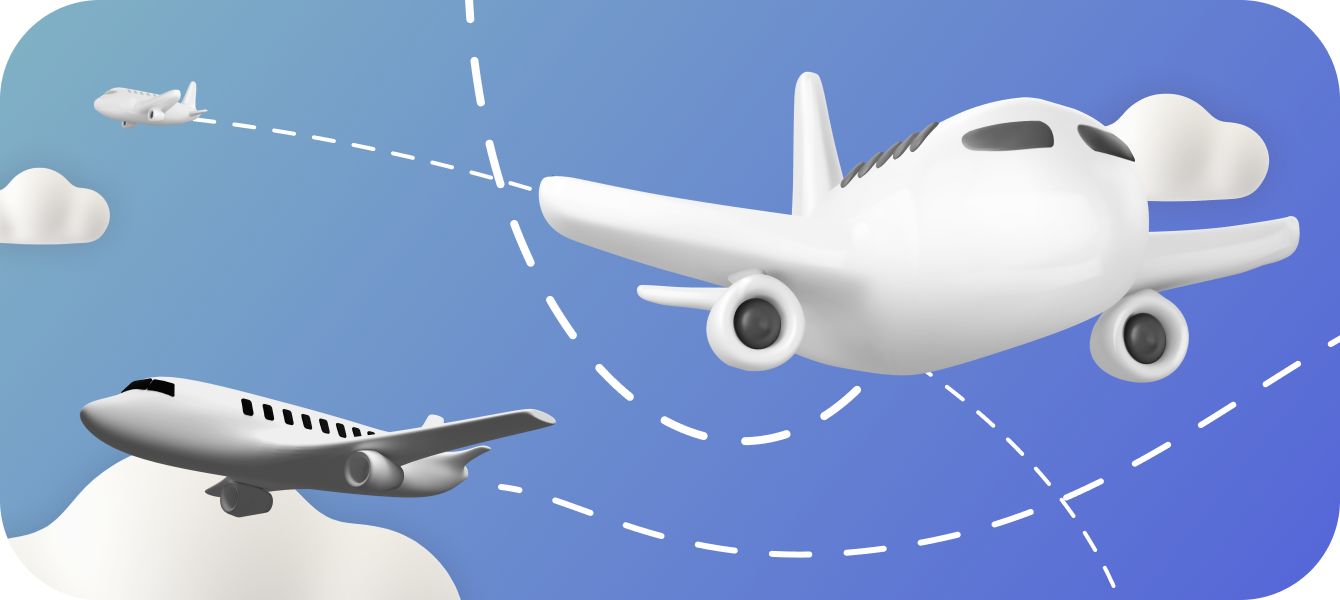
If you’re planning your next steps in aviation, it’s important to understand the current job market for type ratings in Europe. Airlines’ demand for pilots with specific type ratings typically shifts with industry trends, route expansions, and fleet changes. By staying informed, you can make a strategic choice about which type rating to pursue based on market demand.
Narrow-Body Jets for Short-Haul Routes
In Europe, many airlines focus on narrow-body jets, such as the Boeing 737 and Airbus A320 families, which are frequently used for short-haul and medium-haul flights. These aircraft are the backbone of low-cost carriers like Ryanair and EasyJet, as well as major airlines operating high-frequency routes across Europe. If your goal is to fly for one of these airlines, obtaining a type rating for a narrow-body jet could significantly boost your employability.
Wide-Body Jets for Long-Haul Routes
On the other hand, if long-haul international flights appeal to you, it’s worth considering a type rating for wide-body aircraft such as the Boeing 777, 787 Dreamliner, or Airbus A330 and A350. European airlines, including British Airways, Lufthansa, and Air France, regularly recruit pilots with type ratings for these long-range aircraft. While the demand for wide-body jets dipped during the COVID-19 pandemic, the recovery of international travel is likely to revive this segment, making wide-body type ratings a valuable investment in the near future.
Current Industry Trends
Post-pandemic recovery and the growing popularity of budget airlines mean that the Boeing 737 and Airbus A320 families are in particularly high demand. Many airlines are expanding their short-haul networks, making these type ratings attractive for aspiring pilots. However, with the gradual return of international travel, wide-body jets may also see a resurgence in demand, especially for transcontinental routes.
In short, if you’re looking for versatility and plenty of job opportunities, a type rating for a narrow-body aircraft is a solid choice. However, if you’re aiming for long-haul flights and a future in global aviation, wide-body type ratings can offer a more niche-specific, but highly rewarding, career path.
5 Tips for a Smooth Type Rating Process

Here are some tips to help you approach the type rating process with strategic planning, so you avoid costly mistakes and ensure your investment is both practical and beneficial for your career.
Secure Employment First
Before committing to a type rating, ensure you have a job offer or conditional employment with an airline that operates the aircraft type you're training for. Many airlines cover the cost of type ratings for their pilots, saving you significant expenses and guaranteeing the rating will be put to use.
Choose the Right Training Organisation
Thoroughly research Approved Training Organisations (ATOs) and select one with a strong reputation and experienced instructors. A quality ATO can provide better training, improving your chances of passing the check ride and excelling in your career.
Prepare Financially
A type rating is a substantial financial commitment. Look for scholarships, grants, or financing options that can help cover the costs. Moreover, type ratings are valid for only 12 months, after which you’ll need to complete recurrent training to maintain the qualification. Those can be expensive, so plan accordingly for these ongoing costs.
Be Strategic, Not Random
Avoid getting a type rating for an aircraft type without a clear path to employment. If you invest in a type rating for an aircraft that you don’t end up flying, it can be a costly and wasted effort. Focus on securing employment first or choosing a type rating that aligns with your career goals.
Stay Current
Once you've earned your type rating, keep it active by undergoing annual proficiency checks and recurrent training. This ensures you remain employable and ready to fly the aircraft at any time.
5 Frequently Asked Questions about Type Rating

How Long Does It Take to Obtain a Type Rating?
The time it takes to complete aircraft type ratings varies depending on factors like the complexity of the aircraft and your prior experience. However, most pilots can expect to spend two to six weeks in full-time training.
Ground School: This phase typically lasts one to two weeks, during which you’ll focus on the theoretical aspects of the aircraft.
Simulator Training: Following ground school, simulator sessions take an additional one to two weeks, allowing you to practice flying the aircraft in a safe, controlled environment.
Some programmes offer accelerated training that condenses the process into a shorter timeframe, while others may spread it out over a longer period. Overall, a type rating is a significant time commitment, but it’s essential for advancing your career as a commercial pilot.
What Does a Type Rating Cost?
The cost of a type rating can vary significantly depending on the aircraft and the training organisation. As a rough guide, a Boeing 737 type rating typically costs between €16,000 and €34,000. While it’s tempting to go for the cheapest option, remember that the quality of the training should be a top priority. A higher price tag often reflects better facilities, more experienced type rating instructors, and a more thorough training experience.
How Long Is a Type Rating Valid?
Type ratings are generally valid for one year. To keep your rating current, you’ll need to undergo an annual proficiency check with an examiner. If the certificate has expired, you’ll need to complete a renewal type rating course at an Approved Training Organisation (ATO) to reactivate it.
Can a Type Rating Cover Multiple Aircraft?
Yes and no. Some aircraft families share similarities, allowing a single type rating to cover multiple models. For example:
Boeing 737 Family: A single type rating covers all 737 versions, from the Classic (-300/400/500) to the Next Generation (-600/700/800/900) and even the 737 MAX.
Airbus A320 Family: The A320 type rating allows you to fly the A318, A319, A320, A321, and ACJ (Airbus Corporate Jet), as these models share a similar cockpit layout.
However, transitioning between more different models, such as from the Airbus A320 to the A330, requires additional training through a Cross-Crew Qualification (CCQ) course.
How Many Type Ratings Can a Pilot Hold?
In theory, there’s no limit to the number of type ratings a pilot can obtain — you could, if you wanted, train to fly every aircraft type! However, in practice, regulatory bodies like EASA restrict commercial pilots to actively using no more than two type ratings at a time. The FAA has similar regulations.
Airhead's Takeaway

Earning a type rating is a pivotal moment in any pilot’s career. It’s a demanding but rewarding process that opens up new opportunities to fly more advanced aircraft and unlocks career progression within the aviation industry. The more informed you are about type ratings, the better equipped you’ll be to make the right decisions, whether it's choosing the right aircraft or navigating through financing options. With the right mindset, resources, and preparation, you'll find yourself in the cockpit of your dream aircraft in no time.

